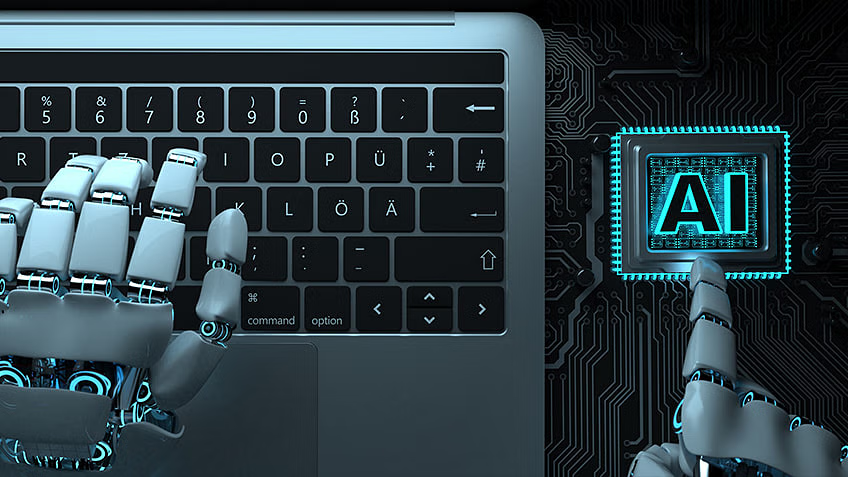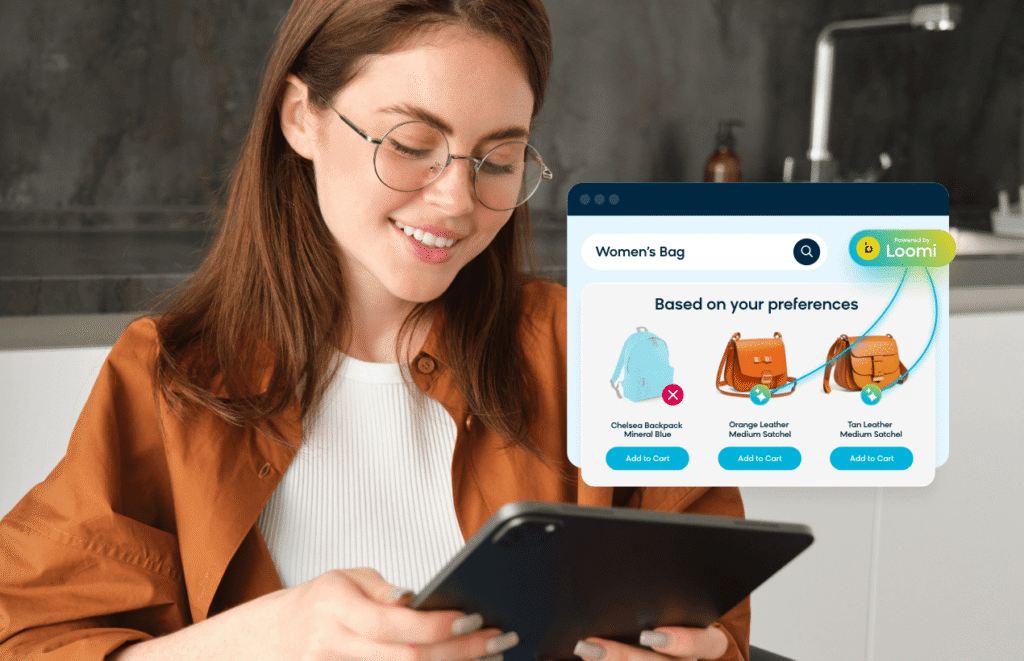Artificial intelligence is no longer a far-off concept; it touches your routine in ways you might not even notice. From the recommendations you receive on streaming platforms to the voice assistants that answer your questions, AI quietly shapes countless aspects of your day. You interact with artificial intelligence every day through your devices, your home, your travel, and even the way you communicate online.
AI powers smart home features, enhances how you navigate your world, and improves how you connect with others. It also plays a growing role in how you access information, manage your health, and handle daily tasks—making your life more efficient, convenient, and tailored to your needs.
Key Takeaways
- AI is deeply integrated into daily personal and home technologies
- Everyday communication, navigation, and health are improved by AI
- Understanding AI’s role helps you use technology more efficiently

AI Applications in Personal Devices
AI is integrated into the tools you use daily, enhancing convenience, productivity, and security. These features can be found in voice assistants, camera systems, and platforms that tailor content to your preferences.
Voice Assistants in Daily Routines
Voice assistants like Alexa, Siri, and Google Assistant help you complete everyday tasks hands-free. You can set reminders, play music, control smart home devices, or ask for the weather simply by speaking.
These systems use advanced speech-to-text and natural language processing to understand your commands. With regular interaction, they learn your preferences, making responses more relevant. For example, Siri can suggest call times based on your past habits, while Google Assistant can notify you about traffic on your regular route.
Many smart devices such as speakers, lights, and thermostats now work with these voice assistants. You gain the ability to automate routines, adjust home settings, or get information instantly with a simple phrase.

Smartphones and Facial Recognition
Modern smartphones rely on facial recognition powered by AI to offer secure and convenient access. This technology examines unique features like the distance between your eyes or the shape of your jawline.
When you unlock your phone with your face, the AI compares your image against stored data, verifying your identity in seconds. This same technology is often used in smart cameras for home security, where AI can detect people or distinguish between family members, pets, and strangers.
Some banking and payment apps use facial recognition for added protection. With strong AI, you reduce the risk of unauthorized access and improve security for sensitive information.
Content Recommendations and Personalization
Streaming services like Netflix and Spotify use AI to suggest shows, movies, and music you are likely to enjoy, based on your past viewing or listening habits. The more you engage with these platforms, the better their models become at predicting your preferences.
Amazon and Facebook also use personalized recommendations. Amazon’s engine suggests items you might want to purchase next, while Facebook customizes your news feed to show posts and ads that match your interests. This personalization not only streamlines your experience but also saves you time by highlighting relevant content.
Below is a quick example of platforms and the types of personalized recommendations you receive:

| Platform | Recommendation Type |
|---|---|
| Netflix | TV Shows, Movies |
| Spotify | Songs, Playlists |
| Amazon | Products, Deals |
| Posts, Ads, Events |
AI-driven recommendations are deeply embedded in your daily device use, adapting and evolving as your tastes shift.
Smart Homes and Everyday Automation
AI-driven smart home technology lets you automate daily routines, boost security, and improve how you use energy at home. You can manage lighting, temperature, and surveillance with connected smart devices, often through simple voice commands or apps.
Home Automation and Smart Devices
With smart home devices, you gain more control and convenience in managing household tasks. Devices like smart thermostats, lighting systems, and AI-powered appliances can learn your preferences and automatically adapt. For example:
- Lighting: Set schedules or activate lights with sensors and voice assistants.
- Climate control: Smart thermostats adjust temperature based on your activity and the weather.
- Appliances: AI tools in ovens and washing machines optimize cycles for efficiency.
Integration across devices is often handled with systems like Amazon Alexa, Google Home, or Apple HomeKit. You can connect multiple brands and platforms for unified control. This setup streamlines repetitive tasks, making your day more efficient without extra effort on your part.
Remote Monitoring and Security
AI has transformed home security with smart devices and automation. Smart cameras, video doorbells, and motion sensors offer you real-time monitoring, even when you’re not at home. These systems often use AI to distinguish between familiar faces, pets, and potential intruders, sending alerts only when necessary.
You can check live feeds or recorded clips from your smartphone. Some security systems integrate with police or private response services for added protection. Automated lighting and door locks can simulate occupancy to deter break-ins, while remote monitoring lets you control entry and review events at any time.
Energy Efficiency and Comfort
Smart home automation goes beyond convenience by helping you use resources more efficiently. Smart thermostats and connected energy meters monitor your usage patterns, adjusting heating and cooling to match your schedule and minimize waste. Many systems provide detailed usage reports so you can spot trends and make informed choices.
You can set automations such as turning off lights in unused rooms or adjusting shades to reduce heat gain. Smart devices also support comfort by maintaining preferred climate and lighting without manual input. This balance of AI-managed comfort and energy savings helps reduce your carbon footprint and control costs.

AI in Communication, Social Media, and Language
AI plays a central role in how you send, receive, and interpret information online today. Tools like chatbots, social media algorithms, and natural language processing systems influence your daily digital interactions by shaping what you see and how you connect.
Social Media Algorithms
Social media platforms such as Facebook and Instagram use AI-powered algorithms to curate your feeds and personalize your user experience. Every time you interact with posts or ads, these algorithms process vast amounts of data to predict which content will be most engaging for you.
AI not only sorts your news feed but also analyzes patterns in likes, shares, and comments to prioritize trending content. Sentiment analysis is used to understand the emotional tone of posts and tailor recommendations further. This helps social media companies keep you engaged and maximize ad relevance.
You may notice your feed changing based on what you interact with most often. AI systems are designed to adjust quickly, which means your content recommendations evolve in real time as your interests do.
Chatbots and Customer Service
AI chatbots have transformed the way you interact with companies and customer support teams online. Many websites now feature automated chat windows that can answer frequently asked questions, troubleshoot common problems, or redirect you to the right department.
These chatbots use conversational AI to understand and respond to your queries with increasing accuracy. Natural language processing (NLP) allows them to identify intent and extract key facts, making the conversation smooth and relevant.
AI-powered customer service is available 24/7, reducing wait times and freeing up human agents for more complex issues. You benefit from immediate responses and standardization, but in some cases, you may still need escalation to a human representative for nuanced questions.
Natural Language Processing and Translation
Natural language processing (NLP) is at the core of many AI language features you use daily. Tools like Google Translate allow instant translation between dozens of languages, making it easier to communicate or access content globally.
NLP also powers features such as autocorrect, voice recognition, and email filters. Sentiment analysis enables platforms to detect tone and intent within text, helping companies monitor social conversations or filter harmful content.
For multilingual communication, AI advances in speech-to-text and translation solutions bridge language barriers. These technologies make it simpler for you to connect and collaborate with others around the world, even if you don’t share the same language.

AI-Driven Navigation and Transportation
AI is deeply involved in how you move from place to place, from the apps you use on your phone to the vehicles that may drive themselves. These systems focus on making transportation faster, safer, and more efficient with real-time data and intelligent decision-making.
Navigation Apps and Real-Time Routing
Modern navigation apps such as Google Maps and Waze depend heavily on AI to deliver accurate and real-time directions. Machine learning algorithms analyze traffic data from millions of users, detect incidents, and suggest optimal routes using current road conditions. You benefit from automatic re-routing when there is traffic congestion or road closures.
These apps process live data from connected devices, including smartphones and traffic sensors, to estimate arrival times. AI also helps predict traffic patterns and provides alerts for construction or accidents. This makes your daily commute more predictable and manageable.
Some services now offer features like lane guidance, eco-friendly routes, or integration with public transit schedules. The underlying AI engine personalizes your experience by learning your habits and preferred routes over time.
Autonomous Vehicles and Self-Driving Cars
Autonomous vehicles and self-driving cars use a combination of AI, cameras, radar, lidar, and sensors to perceive their environment and navigate roads without human input. Advanced neural networks process the vast amount of data collected every second and make split-second driving decisions.
Companies are testing self-driving taxis, freight trucks, and delivery robots in real-world conditions. These vehicles interpret traffic signals, detect pedestrians, and handle complex street scenarios through constant AI-driven evaluation. You might already see pilot programs in select cities using autonomous shuttles or ride-hailing services.
Safety and efficiency are central goals. AI manages everything from speed control to collision avoidance, working to reduce traffic accidents caused by human error. Reliable self-driving technology also promises expanded mobility for people who cannot drive due to age or disability.
Public Safety and Surveillance
AI supports public safety in the transportation sector through intelligent surveillance and monitoring. Cameras on public transport and at intersections use AI to detect unusual behavior, track vehicles, and improve security without constant human oversight.
Traffic surveillance systems can identify unsafe driving, monitor for accidents, and trigger fast emergency responses. Some cities use AI-driven analytics to tackle traffic violations or identify stolen vehicles through license plate recognition.
These systems respect evolving privacy regulations but aim to keep roads and public spaces safer. By analyzing patterns, AI can help law enforcement anticipate potential risks and make informed decisions quickly. This technology is often deployed quietly in the background, supporting both urban managers and everyday commuters.

AI Transforming Healthcare and Wellness
Artificial intelligence is making health services more tailored, data-driven, and accessible. With smarter tools, you benefit from earlier detection, more precise diagnosis, and care that fits your unique needs.
Personalized Treatments and Medical Imaging
AI systems now analyze large sets of health data—genetics, lifestyle, and even medical histories—to recommend personalized treatments just for you. Instead of a one-size-fits-all approach, therapies can be tailored, making medication dosing and care much more effective.
AI-powered medical imaging tools interpret x-rays, MRIs, and CT scans with high accuracy. These algorithms detect patterns and anomalies, sometimes catching subtle issues that may be missed by human eyes. This leads to earlier diagnoses and thus faster interventions.
You might notice AI’s presence in applications helping coordinate your lab results, previous treatments, and follow-up care, helping you and your providers make decisions backed by evidence. The results are not just more accurate, but often more efficient and affordable.
Remote Patient Monitoring
Many chronic conditions now rely on remote patient monitoring technology, allowing your health to be tracked from home. Wearable sensors and smart devices collect data such as heart rate, blood pressure, blood sugar, or sleep patterns.
AI software analyzes this information in real time, alerting care teams to potential problems before they escalate. You can receive reminders, medication adjustments, or direct contact from your provider without leaving your home.
For patients in rural or underserved areas, remote monitoring makes high-quality oversight far more accessible. These systems support prevention, early intervention, and improved disease management.
Healthcare Efficiency and Innovation
AI is streamlining key parts of healthcare operations, from automating appointment scheduling to managing patient records. This reduces errors and frees up your healthcare providers to focus on your direct care.
In addition, AI-driven innovation supports predictive analytics for public health—forecasting outbreaks, tracking disease trends, and planning resources more effectively. Hospitals use AI triage systems for emergency cases, cutting wait times and improving outcomes.
Administrative tasks such as billing, coding, and insurance verification are managed faster and more accurately. These systemic improvements not only save time but can also lower overall healthcare costs for you.

Challenges, Risks, and the Future of AI in Everyday Life
AI offers significant benefits but also presents complex issues around digital security, economic disruption, ethical standards, and civil liberties. As these systems become more integrated, you face evolving risks and new social responsibilities.
Cybersecurity and Fraud Detection
AI systems are widely used to enhance cybersecurity by identifying threats and suspicious activities faster than manual methods. Machine learning algorithms can scan large volumes of network traffic to detect anomalies, malware, or phishing attempts. This means you benefit from improved fraud detection in areas such as online banking and e-commerce.
However, cybercriminals are also using AI to develop more sophisticated attacks. AI-driven malware learns and adapts, making traditional security tools less effective. You may encounter phishing emails that are almost indistinguishable from authentic communication.
Constant updates and vigilance are required to stay ahead of these evolving threats. The balance between innovative protection and new attack vectors remains a key challenge.
Job Displacement and Automation Risks
AI is transforming workplaces by automating repetitive tasks and increasing efficiency. While this creates new opportunities in tech-driven sectors, it also leads to job displacement, especially in manufacturing, retail, and customer service.
Routine jobs are at the highest risk, but even skilled positions face partial automation through intelligent software and robotics. For example, automated checkout systems in stores and AI-powered chatbots for customer service reduce your need for direct human assistance.
To adapt, you need to focus on developing new skills suited to a digital economy. Lifelong learning and reskilling are essential strategies for maintaining job security as AI adoption grows.
Ethics, Surveillance, and Autonomous Weapons
Ethical concerns about AI center on data privacy, bias, and accountability. AI-powered surveillance is increasingly used by governments and companies to monitor public spaces and individual behavior, raising questions about your privacy and freedom.
Bias in AI algorithms can lead to unfair treatment in areas like hiring, lending, or law enforcement. Because these systems learn from historical data, errors or prejudices can be embedded and replicated at scale.
Autonomous weapons systems introduce further risks, including lack of accountability and potential misuse. International debates highlight the importance of strong regulation, transparency, and clear ethical guidelines to prevent harmful applications of AI.
- 5shares
- Facebook0
- Pinterest5
- Twitter0
- Reddit0



